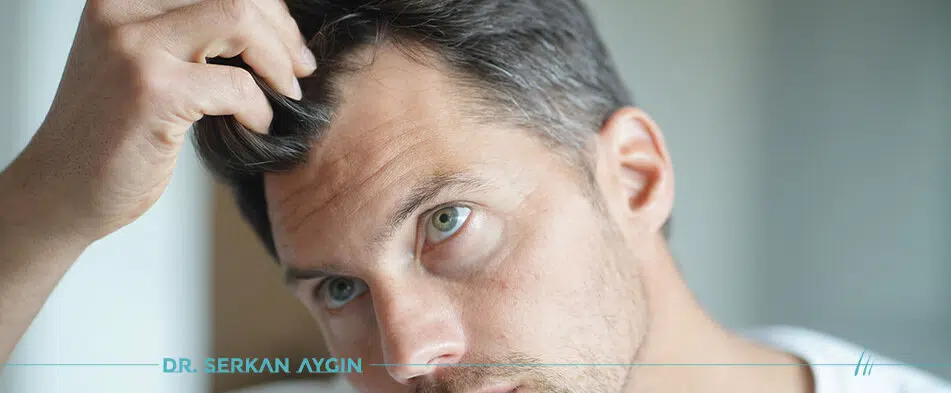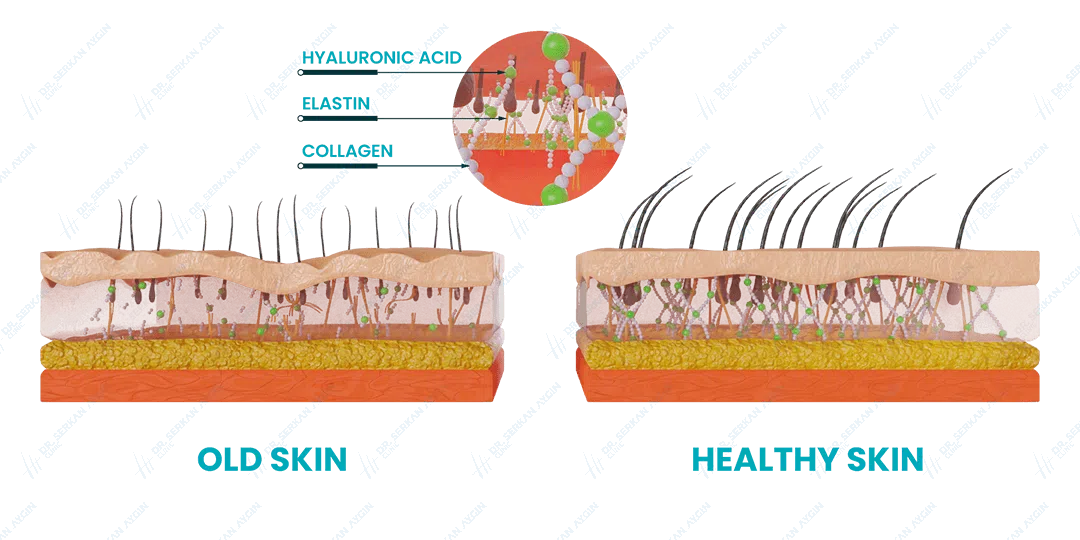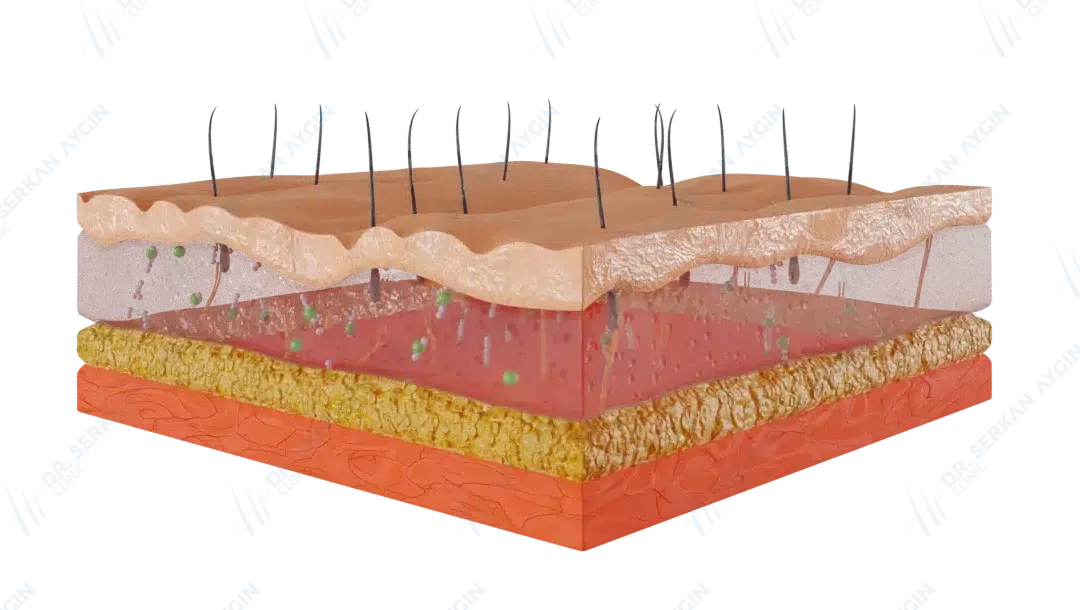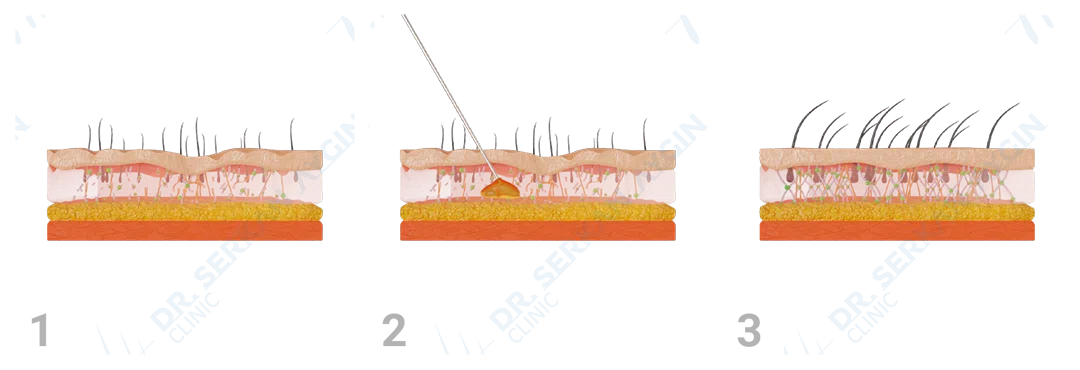Thanks to the advancements in the medical field, stem cell therapy has become one of the first solutions that come to mind for hair thickening. The quick answer to the question is “yes, it is possible to thicken hair with stem cell therapy.” Of course, as with any treatment, in order to get positive results there are some responsibilities on our part.
In addition to genetic predispositions, many external factors we are exposed to can directly affect the health of our hair. Stress, insufficient and irregular sleep, malnutrition, vitamin and mineral deficiencies, and unhealthy lifestyle in general are among the main causes of weakening of hair and eventually hair loss.
Take the first step towards healthy hair: Live a healthy life!
As with many other problems related to our body, the first step we need to take is to switch to a healthier lifestyle. Drinking more water, balanced nutrition, an active life, and regular sleep will help slow down the deformations in our body. In this way, we can significantly increase the access of our hair roots and scalp to the nutrients they need and the success rate of the applied treatment.
If we have started to do our part for a healthier life, then we can start benefiting from the latest developments in the medical field. Especially in recent times, medical treatments that increase our quality of life have started to offer such a wide range that it is left to you to choose the most suitable treatment method.
“I want to use my lifeline!”
You may like to use your lifeline, in other words, supportive and restorative treatments such as:
- Mesotherapy , which is a mixture of vitamins, minerals, amino acids, and hyaluronic acid that has an active role in cell metabolism and provides the renewal of your skin, and
- PRP, which enables damaged tissues to heal rapidly with platelet injection, offers the highest success rate among these types of treatments.
Such treatments provide the care and repair that our scalp and hair roots need. However, if you are looking for a permanent solution for your hair, stem cell-based Fibroblast therapy may be the solution you are looking for.
Before we talk about the application of Fibroblast treatment and how effective results are achieved with this method, it may be helpful to go over the meanings of some specific terms such as “stem cell”, “fibroblast”, and “Alloblast”. Let’s first talk about the functions of these cell types and how they are obtained:
What are stem cells?
We can say that stem cells, which are a kind of wild card in our body, are the basic building blocks that make up the structure of tissues and organs. The main feature that makes stem cells stand out is their ability to transform into all cells in the organism. Thanks to this property of stem cells, the regeneration and repair of damaged or diseased tissues and organs are possible.
The ability of stem cells to be able to transform into that tissue by mimicking the properties of the tissue to which they will be applied ensures that no allergic reaction is seen in patients after the procedure. Thanks to this critical feature, stem cells can be obtained either autologously from the patient themselves or from a donor, depending on the preference of the medical team.
Stem cells are called fibroblasts (connective tissue), chondroblasts (cartilage tissue), and osteoblasts (bone tissue) depending on the type of tissue they are found in. Among these types of stem cells, the ones that support the production of collagen and elastin when applied to the scalp are fibroblast cells.
Aging or an unhealthy lifestyle can cause a decrease in collagen and elastin production, leading to a loss of skin elasticity, a loss of vitality, a pale complexion, wrinkles, and sagging skin. Hair follicles that are not adequately nourished in the scalp can lead to slowing growth, loss of hair vitality, split ends, and hair loss, unless a special treatment such as Alloblast is applied.
What is Alloblast (Fibroblast)?
Alloblast, which means allogeneic fibroblast, refers to a treatment method in which fibroblasts obtained from the foreskins of newborn babies are multiplied in an advanced laboratory environment and injected into the desired area.
The Alloblast treatment, which is applied to the scalp by injection, helps your scalp renew, repair, gain elasticity, and receive better nourishment. Thus, your hair rejuvenates and thickens with the power of stem cells.
Is Alloblast a safe treatment?
The Alloblast treatment, which is carried out by following a series of standard treatment processes of fibroblast cells multiplied in a GMP-approved zero-particle laboratory with high-tech systems, has been approved by the US Food and Drug Administration (FDA) and the Turkish Ministry of Health.
Is the Alloblast a painful treatment?
During and after the Alloblast treatment, patients do not feel any pain or discomfort after local numbness is provided in the operation area with an anesthetic cream before the application.
What is the recovery process after the Alloblast treatment?
Despite being a treatment method involving injection, there is no need for a recovery process after Alloblast. Patients who undergo treatment do not need to interrupt their social life.
Who can receive Alloblast treatment?
This treatment can be safely applied to any individual over the age of 18



